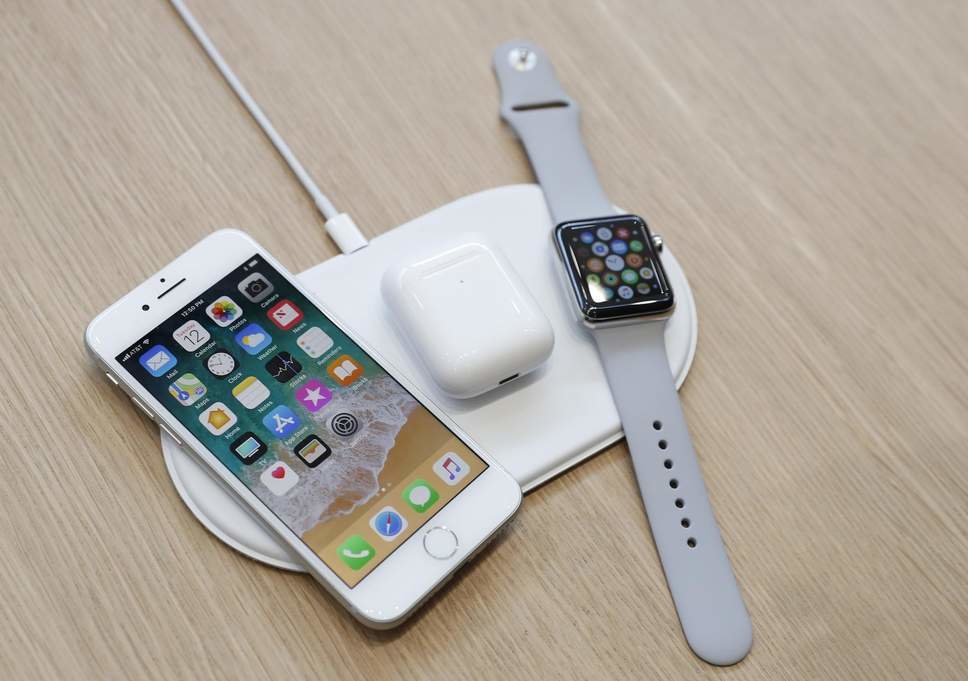
Why Apple’s Share Value is Suffering from the Over-Dependency of the iPhone

Apple is capitulating, and the reasons couldn’t be clearer than a sunny summer day.
Indeed, the stock, which was once believed to be impermeable to the volatile nature of the stock market, has lost a whopping $100 billion from its monumental $1 trillion market valuation.
Abysmal Trading for the Company’s Stock
In fact, it is currently heading for its eighth week of subsequent declines since its abysmal trading during the 2008 financial crisis.
So what is the main reason for this poor performance? It all falls back down to the iPhone.
For instance, on Nov 1st, when Apple released its fourth-quarter earnings, the company reported earnings that were significantly lower than the iPhone shipments that were expected to be made in their fourth straight quarter. Indeed, analysts warned that Apple should experience lighter sales this festive season.
Moreover, in what was considered a surprising announcement, the company said that it would cease from reporting the individual sales, as well as the revenue figures of the iPhone. After the announcement, the company’s shares decreased by a whopping 6.6 percent in the subsequent trading session.

Over the years, Apple has been relying on its iPhone segment as its main source of revenue
Supply-Chain Rumors Have Further Crippled Its Stock Market Share Value
If that wasn’t enough, Apple was further hit by speculation and supply-chain rumors that it was cutting back on the number of components that it had ordered for its new set of iPhones.
From the news, the stock was further hard-hit, capitulating by 5 percent the previous week after four suppliers of the iPhone minimized their revenue forecasts!
According to managing director in charge of equity research at Wedbush Securities, Dan Ives, he expressed the negative sentiment that was coming from investors since the company’s decision from 2015.
Indeed, it seems like every bearing is coming out of place!
That being said, Apple has had its share of supply-chain rumors over the years, ever since it’s been fighting the stagnation of its iPhone sales in subsequent quarters.
Nevertheless, it is the absence of any encouraging data points, the complexity if reports, and the floury of bad news that has weighed heavily on the performance of the company’s shares.

However, enthusiasm for the iPhone has been slowly been fading away
Keeping Its Sales Statistics from the Public
In terms of sales, Apple’s decision to keep iPhone sales under lock and key has sparked a lot of concern regarding its biggest revenue segment.
For instance, in 2008, during the company’s first sales of iPhones, the smartphone constituted about 5.7 percent of the company’s overall revenue.
In 2009, the percentage tripled. By 2015, when the hype of the iPhone was at its peak, nearly $2 out of every $3 going to Apple as revenue and profit originated from the iPhone.
That being said, the effects of lengthier upgrade cycles as well as global market saturation have affected the sales of the iPhone.
Moreover, there have been reports of lighter sales emerging in influential international markets such as India and China. Such statistics have heightened doubt as to whether Apple will be able to sustain its growth in the smartphone industry on a long-term basis.
Indeed, for quite a number of years, the Apple story has revolved around the iPhone. As a matter of fact, the iPhone was so revolutionary at its peak that it even led to declined sales and eventual loss of interest in the iPod. Moreover, it has also been the epicenter of the latest updates made to the Mac and the iPad.
That being said, any weakness in the company’s largest company could scare shareholders and result in unwarranted public panic.

In an attempt to advertise its other segments, Apple has been downplaying its iPhone advertising in lieu of its Services and Other Products
Other Apple Segments
In recent years, Apple has been downplaying the iPhone segment publicly to direct attention to its service categories, as well as other Apple products.
Services of interest include the likes of its cloud services, Apple Pay, Apple Care, and the Apple Store. Moreover, it has also directed its marketing and advertising emphasis on products such as the HomePod, AirPods, and the Apple Watch.
That being said, analysts are skeptical whether these two business segments will be able to pull in the kind of revenue that the iPhone has been pulling in over the years. Additionally, for its 2018 fiscal year, the revenue totaled $17 billion of its Other Products, while the Services revenue came to $37 billion.
In total, iPhones total revenue for 2018 fiscal year came to $167 billion.
More in Finance & Business
-
`
Santo Spirits: Sammy Hagar and Guy Fieri’s Joint Venture
In the world of business partnerships, some combinations might seem unconventional at first glance. But when you delve deeper into the...
November 16, 2023 -
`
Everything You Need to Know About Mortgage Rate Lock
You have probably embarked on the exciting yet nerve-wracking voyage of purchasing a home. Amidst the sea of paperwork, open houses,...
November 9, 2023 -
`
7 Effective Ways to Make Your Business More Sustainable
In an age of rising environmental consciousness, making your business more sustainable isn’t just a trend; it’s a necessity. Sustainable practices...
November 3, 2023 -
`
Housing Market Going Up? Then Why Not Rent?
“Buy a house! It is the best investment!” How many times have you heard that? Probably enough to make a drinking...
October 29, 2023 -
`
Surprising! Celebs Who You Didn’t Know Had a Master’s Degree
When it comes to celebrities, we often associate them with glitz, glamour, and blockbuster movies. But did you know that some...
October 17, 2023 -
`
Navigating the Housing Maze: The 7% Mortgage Rate Quandary
If there is one thing that this year has thrown our way (apart from those fascinating tech gadgets we did not know...
October 12, 2023 -
`
Where to Buy a House in the U.S With a $100K Salary
Got a cool $100,000 annual paycheck in your pocket? Cheers to that accomplishment! With such a financial cushion, dreams of homeownership...
October 6, 2023 -
`
The “Grave” Housing Crisis Forcing U.S. Homeowners to Sell Their Houses
Every culture has its dreams and aspirations. For those living in the United States, it has traditionally been an idyllic house, spacious and...
October 1, 2023 -
`
Why Private Equity is Betting Big on Hollywood
Hollywood has long been a glamorous yet unpredictable industry. But what is new in Tinseltown? Private equity investments. Yes, that is right!...
September 19, 2023















You must be logged in to post a comment Login